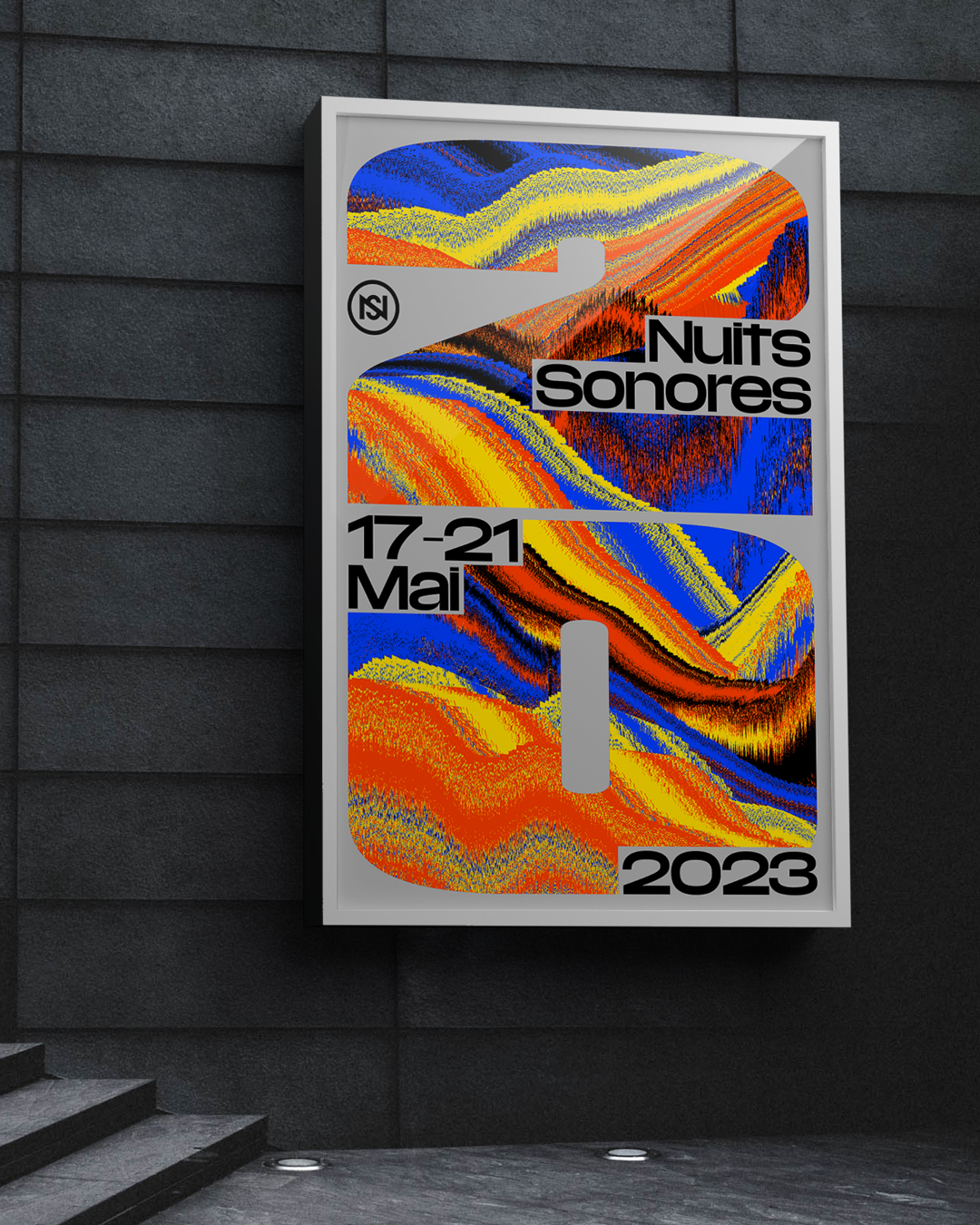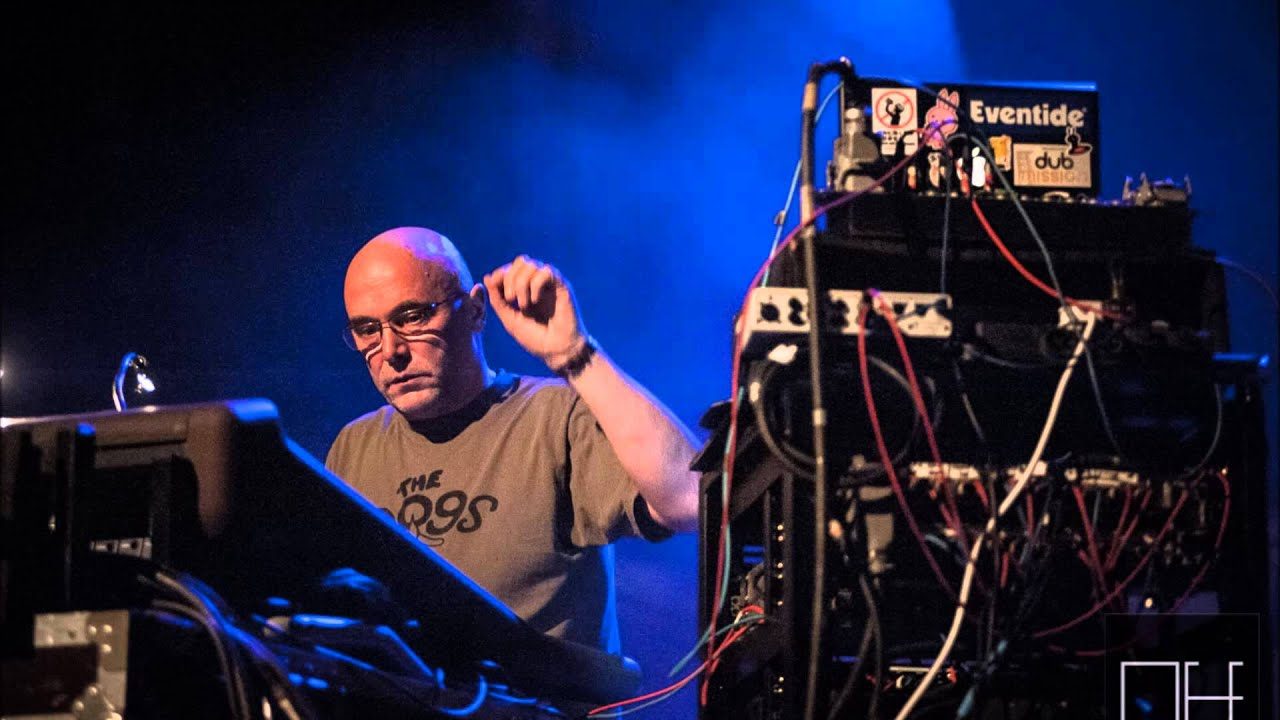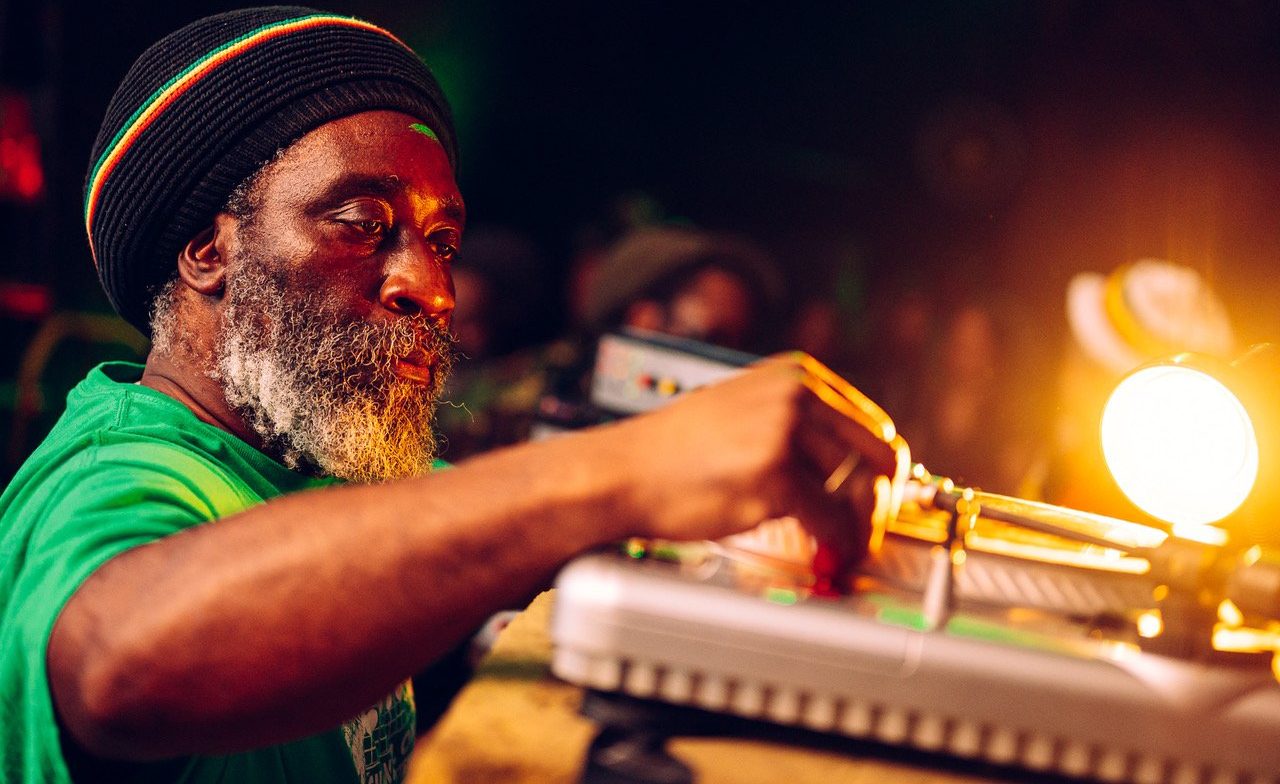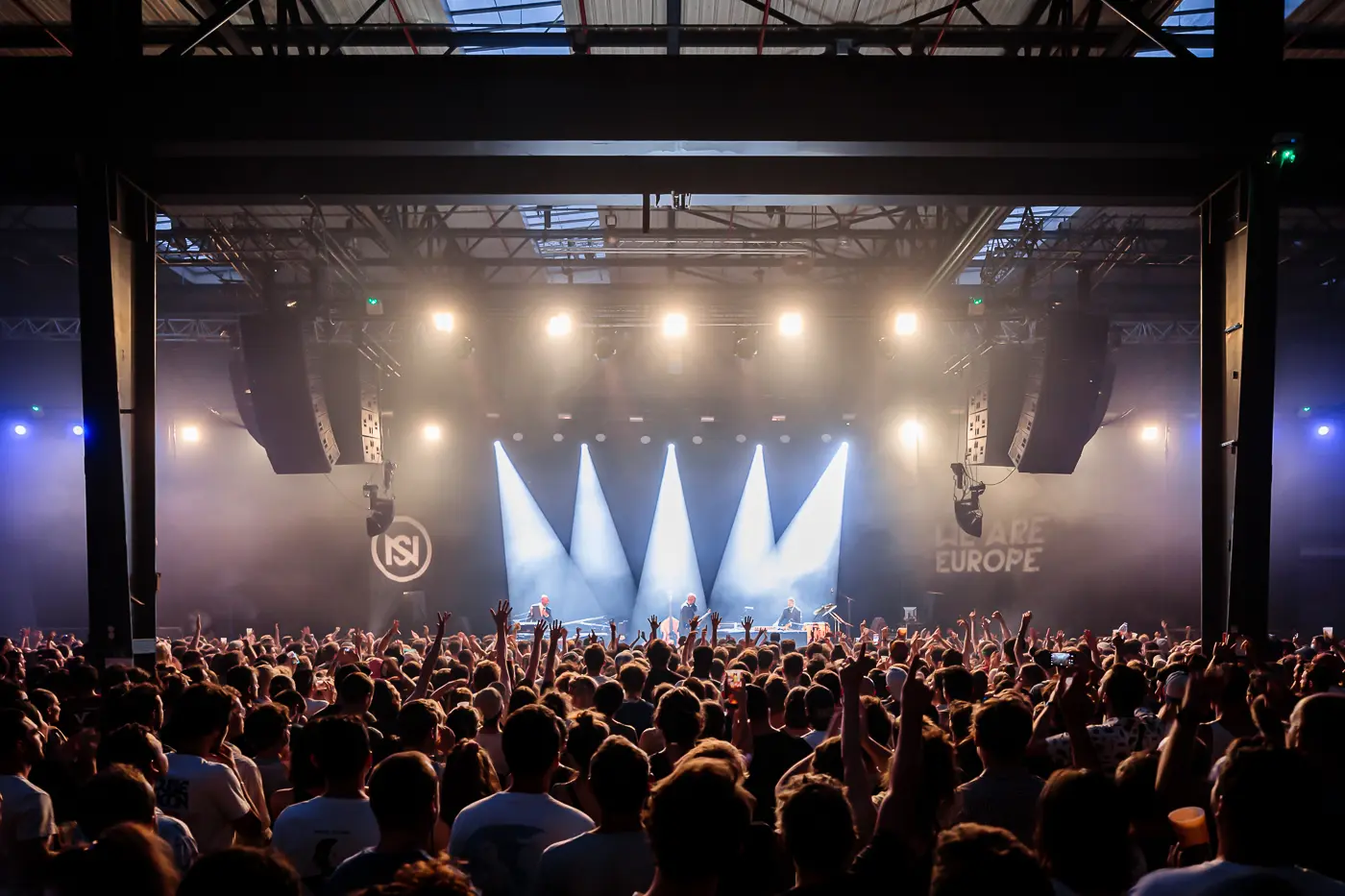Notes on the Nuits Sonores festival in Lyon
Reggae sound systems can be found in the four corners of the world. Even more than the actual technological apparatus, it is the aesthetic and performative features of this Jamaican-born music machine that have had a durable and significant impact over popular and electronic music worldwide. In this blog, SST France team member Jean-Christophe Sevin reflects on the current trend of reggae sound systems performing on stage and taking space in electronic music festivals. Is this another example of sound system’s unstoppable expansion, or does it signal a dilution of the culture?
by Jean Christophe Sevin
Technopol, an association for the defence and promotion of electronic music, was created in February 1996 to push back against the repression of electronic music events in France. The Polaris rave at the Tony Garnier Hall in Lyon had just been cancelled at the last-minute. Two years later, in September 1998, Technopol organized the first techno parade in Paris, a sign of recognition for this music – or, at least, a sign of the desire to move away from the repressive approach. In 2003 the first edition of the Nuits Sonores (‘Sonic Nights’) festival was held in Lyon – nine years after the first edition of Sonar in Barcelona, which served as a model.
In the French context, this could be seen as a sign of change in the institutional attitude towards electronic music, with the city of Lyon acting as a pioneer by supporting the project proposed by Arty Farty association (organizers of Nuits Sonores), thanks to a change in the municipal government. We could add that supporting this project was also seen by the city council as an opportunity to break with the city’s image of a “sleeping beauty” [1]. In the context of a post-industrial, knowledge-based economy and fierce territorial competition, an electronic music festival was conceived as a pull factor for the “creative class”, according to Richard Florida’s theory of the “creative city”, which was very influential among political decision-makers at the time [2].

Nuits Sonores 2023 street poster
In few years, Les Nuits Sonores has established itself as France’s biggest festival dedicated to electronic music, taking place over several days and venues across the city, and growing from 15,000 admissions in 2003 to 100,000 twenty years later. The festival aims to represent a broad spectrum of electronic music, while providing a forum for professionals to reflect on issues of social concern. More recently, a branch of Les Nuits Sonores has been set up in Colombia, in conjunction with the French government’s cultural diplomacy programme, to act as a showcase for French artists.
In May 2023 I was in Lyon to interview some members of the reggae sound system community for the SST project. I was intrigued by the presence of Channel One, one the UK leading reggae sound systems, in the line-up for Saturday 20 May at Nuits Sonores, and (to a lesser extent) also by that of Adrian Sherwood. Looking back over the last twenty years of Nuits Sonore, we can see that reggae has hardly ever been included in the programme, even though the genre’s influence somehow transpired from the sets of British drum’n’bass producers such as Roni Size (who performed at NS in 2003) and Goldie (in 2015). This might be surprising, given that the festival aims to be open to “independent music”, with a section of the programme also dedicated to rock and hip-hop groups. And while one of the festival’s ambitions is to showcase local and regional artists, the festival bill usually do not feature1 any of the so-called ‘French dub’ groups, even though Lyon has historically been the epicenter of this movement with pioneering acts such as High Tone or Kali Live Dub, or the record label Jarring Effect [3]. As opposed to dub traditionally being a studio-based approach to production, these artists have pioneered a musical style combining live instruments (strings, horns, percussions) and electronic hardware, resulting in the a priori oxymoronic formula of “stage dub”. The result is a hybrid electronic music, born of distinctive borrowings from the reggae aesthetic – such as the skank and the use of sound effects – along the lines of trip-hop experimentation and contemporary dub versioning such as Massive Attack’s reworking by Mad Professor.

Adrian Sherwood dubbing it live
I couldn’t get an explanation about this gap in the programme from the festival organizers. But I did consult Fabasstone, founding member of High Tone (one of the French dub pioneers) and also part of the Dub Addict Sound System. According to Fabasstone, the absence of reggae at Nuits Sonores can be explained by the negative appeal of this music, which is sometimes perceived as reactionary in relation to gender and sexuality issues. The LGBTQ+ community has been a founding force of electronic music culture, and especially in the 1990s this was widely acknowledged. Around the same time, reggae music was globally blamed due to controversial and homophobic lyrics by a bunch of Jamaican new roots artists. This is still a sensitive subject, as recent developments in the UK sound system scene have demonstrated. However, it should be recognized that these attitudes do not reflect reggae in its entirety, and especially some younger artists actively seek to create safe spaces for all genders and orientations through their sonic practice, as the case with B.O.S.S. sound system.
These controversies have also tended to overshadow the contribution in terms of technological innovation coming from Jamaican recording studios, which paved the way for electronic music. It should also be added that reggae has been poorly understood by the general public in Europe, who have seen it as an essentially live ad organic music, without understanding the crucial contribution of the sound system to the creation and development of Jamaican popular music since the 1950s. This is currently changing, as shown by the wide-raging celebration of Lee Perry’s career (triggered by his passing in 2021) in the world of electronic music. In this sense, the presence of Adrian Sherwood (On-U Sound, who collaborated with Lee Perry for many years and produced his latest albums), in the Nuits Sonores 2023 line up could be seen as evidence. In the same vein, a further clue may be found in the participation of Kebra Ethiopia, a Rastafarian and pan-Africanist reggae sound system from South Africa, to Boiler Room earlier this year.

Mikey Dread of Channel One sound system
At Nuits Sonores, each festival day is divided into two parts: “Day” from 4pm to 11pm, and “Nuits” from 10pm to 5am. Channel One with Mikey Dread and MC Macky Banton kicked off the ‘Day’ session, playing from 4pm to 6.30pm on the Saturday, the main day of the festival. Adrian Sherwood played from 7.45pm to 8.45pm. With reference to festival timetable conventions, we might say that they were scheduled to play what is usually called a ‘warm up’ set, whereas in a reggae festival they would have been headliners and performed way later in the night. We could therefore spot some sort of genre hierarchy at work in such a running order. But we also need to look at the conventions of electronic music consumption, which implies a continuum of rhythmic intensity which allows modulations but usually no pauses in the rhythmic flow, nor speeches like those punctuating a reggae session. The remarks of a member of the festival organization also lead us to put this analysis into perspective, as he explained in a 2019 interview that at Nuits sonores, “the end of the day, the beginning of the evening and even Sunday afternoons attract more people than the night”. Similarly, he declared that “the commercial exploitation of a venue is often more profitable from 6.30pm to 1am when people are more inclined to drink at the bar” [4]. Was this still the case in 2023?
Anyway, the Saturday show was sold out, so I couldn’t access the festival site. But one of the three festival stages, luckily the one featuring Channel One and Adrian Sherwood, was open air. As a result, the promenade along the quays of the Saône river provided a chance to attend the session with decent acoustics. It should be noted that Channel One were not playing on their sound system. They were performing on a stage with monitor speakers, with a professional pa system addressing the crowd. This, in contrast with the classic sound system spatial configuration with two or three speakers stacks to form an arena or triangle, and the members of the sound system and the audience sharing the same auditory experience.

One of the stages at Nuit Sonores festival. Source: Web
My listening spot on the fringes of the festival turned out to be a very interesting observation point, which I shared with Khalil from Bredda Sound System and Selecta Basta from Dub Action show on Radio Canut. Both, being familiar with the Lyon scene, were able to note the absence of a reggae crowd. The ticket price, together with the presence of just two reggae acts across the three stages might provide the reason. A glance at the audience suggests that it was mainly made up of electronic music fans coming from far and wide, as well as a wealthy crowd that sociology, following Richard Peterson, would describe as “cultural omnivores”, who conform to a new standard of cultural legitimacy based on the diversification of the cultural offer they consume, and who were likely to be at this festival due to its strong symbolic capital [5].
I also noticed that the audience, although friendly, was not very familiar with reggae sound system culture. This became very clear when Mikey Dread, halfway through the session, took the microphone to “pay a tribute to the late great Jah Shaka”. Few arms were raised furtively, while the rest of his speech was met with discreet and polite approval. A sound system audience would have been more receptive, notably when he reminded us of the importance of “continuing to keep reggae music alive in these times”. Adrian Sherwood’s set displayed much the same receptive attitude. The sequence of Bob Marley’s War and its Arabic version by Tunisian singer Neyssatou, released at the end of 2022 on her ambitious “Dub No Frontiers” project, prompted no reaction. Nor did the sound system take of Horace Andy’s Midnight Rockers with Daddy Freddy from the companion album to the critically acclaimed Midnight Rocker, also released in 2022.
Obviously, these observations do not intend to blame an audience that was overall warm and enthusiastic. Rather, the idea is to draw some lines of thought. The electronic music festival forms a “framework”, in the way suggested by Erving Goffman: a symbolic and social structure that guides our interpretation and behavior [6]. The framing of the festival helps to explain the absence of a reggae crowd, as well as the attitude of the attendees. On the other side, including reggae and sound system acts in the Nuits Sonores programme could raise awareness in an audience who is not familiar at all with the cultural codes of reggae music. Furthermore, this could contribute to electronic music fans’ acknowledgement of this original form of ‘bass music’: an Afro-Caribbean approach which emphasizes bass as a principle of composition and which, through the sound systems, cultivated the importance of bass for more than six decades. From this point of view, would reggae be annexed to the wider canon of electronic music? We could also ask, what would be the cost of taking the aesthetic and message of reggae beyond the boundaries of the sound system configuration and the sonic experience it generates? We don’t aim to offer an answer, but rather to raise a question.
—
Jean-Christophe Sevin is a lecturer in information and communication sciences (Avignon University/Centre Norbert Elias). After investigating the political and cultural reception of raves and techno music in France, he is working on the trans-local dynamics of reggae from a fieldwork in Marseille, and as a Research Agent in the SST project he investigates sound-system culture in France.
[1] Cf. « Quand la nuit vampirise le jour : réinventer les codes de la « club culture » », L’Observatoire, vol. 53, no. 1, 2019, pp. 52-54.
[2] Florida R. (2002) The Rise of the Creative Class. And How It’s Transforming Work, Leisure, Community and Everiday Life. New York: Basic Books.
[3] I remember attending a live performance by Le Peuple de L’Herbe in 2006, which is not listed on the archive page, but Vincent Carry, festival director, mentions it here. https://www.francetvinfo.fr/culture/musique/dix-ans-de-nuits-sonores-plein-les-yeux_1615889.html
[4] Cédric Dujardin in « Quand la nuit vampirise le jour : réinventer les codes de la « club culture » », L’Observatoire, vol. 53, no. 1, 2019, pp. 52-54.
[5] Peterson, Richard A. and Roger M. Kern, “Changing Highbrow Taste: From Snob to Omnivore”, American Sociological Review, n°61(5): 900–907, 1996.
[6] Erving Goffman, Frame Analysis: An Essay on the Organization of Experience, Boston: Northeastern University Press, 1974.
